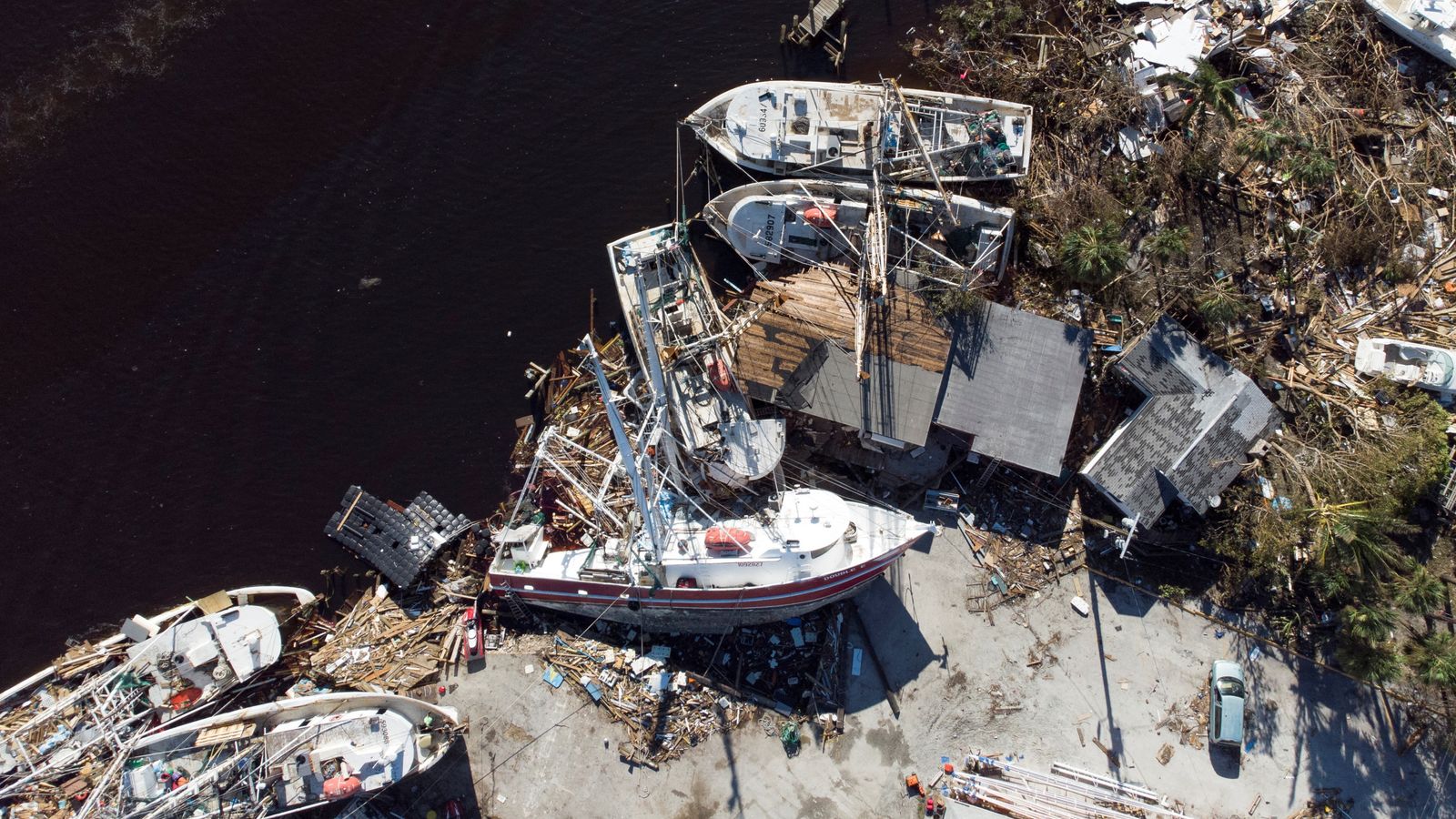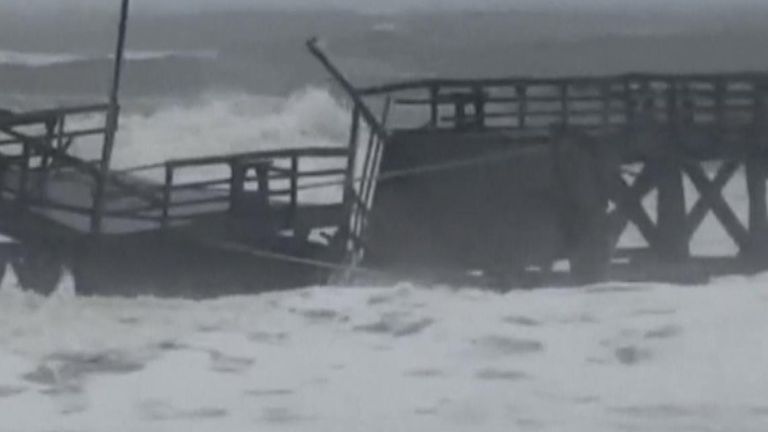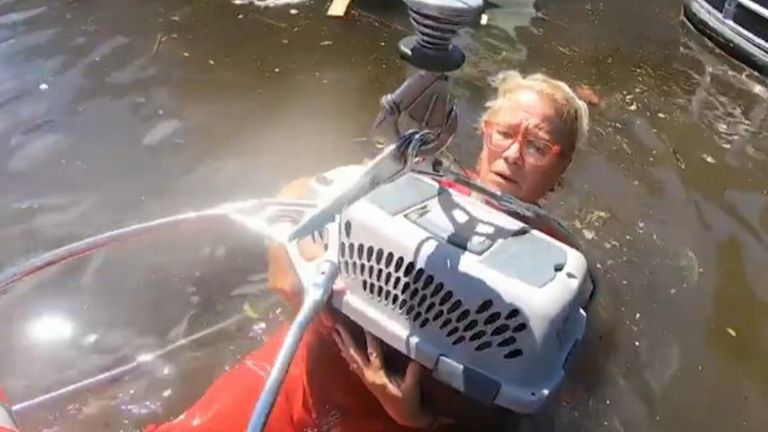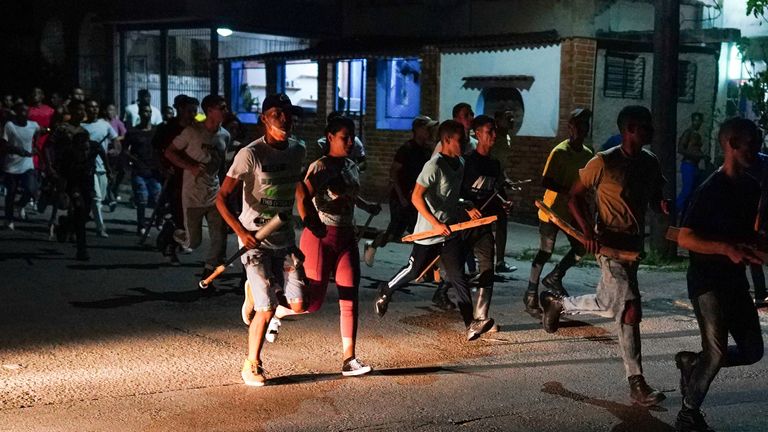At least 30 people have been killed after one of the most powerful storms ever to strike the US mainland wrought widespread destruction, with the number of dead expected to rise.
Hurricane Ian has caused tens of billions of pounds in damage and left around 1.7 million homes and businesses without power, leaving residents to liken the impact to “an A-bomb”.
In Florida, where the storm made landfall after battering western Cuba, coastal towns were turned into disaster areas and around 10,000 people remain unaccounted for although the authorities believe many are likely to be in shelters or without power.
Rescuers are continuing to search for survivors among the ruins of flooded homes.
Ian went on to hammer North and South Carolina with winds of 85mph, destroying piers and leading roads to be blocked by flooding and fallen trees.
Although now a post-tropical cyclone and weakening, it was still expected to bring treacherous conditions to parts of the Carolinas, Virginia and West Virginia on Saturday.
The National Hurricane Center said: “The dangerous storm surge, flash flooding and high wind threat continues.”
While the number of casualties and repair costs remain unclear, the scale of the damage was becoming apparent in Florida.
State governor Ron DeSantis said: “Those older homes that just aren’t as strong built, they got washed into the sea.
“If you are hunkering down in that, that is something that I think would be very difficult to be survivable.”
Meanwhile, insurers are braced for a hit of up to $47bn (£42bn), in what could be the costliest Florida storm since Hurricane Andrew in 1992, according to US property data and analytics company CoreLogic.
US President Joe Biden has approved a disaster declaration, making federal resources available to areas impacted by the storm.
“We’re just beginning to see the scale of that destruction.
“It’s likely to rank among the worst… in the nation’s history,” he said.
Mr Biden also declared an emergency in North Carolina on Saturday.
Read more:
Eyewitness: No one expected Ian to be so vicious
Dramatic images show scale of the destruction
The confirmed dead include 27 victims in Florida, mostly from drowning but also as a result of the storm’s aftermath.
An elderly couple died after their oxygen machines shut off when they lost power, authorities said.
Other victims included a 68-year-old woman swept into the ocean by a wave and a 67-year-old man who fell into rising water inside his home while awaiting rescue.
A 71-year-old man suffered a fatal fall from a rooftop while putting up rain shutters.
The authorities have warned the number of dead is likely to rise much higher once more extensive searches were carried out.
Meanwhile, Cubans have staged protests in neighbourhoods of Havana still without electricity, days after Hurricane Ian knocked out power to the island, as well as flattening homes and ravaging agricultural fields.




